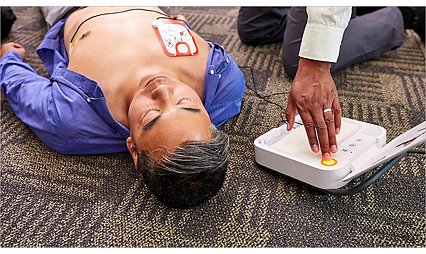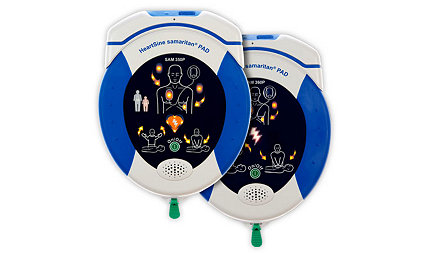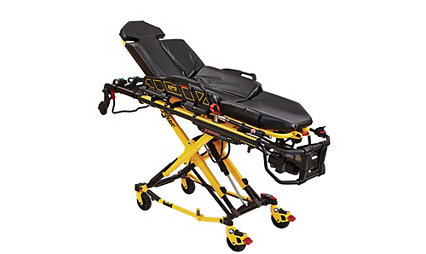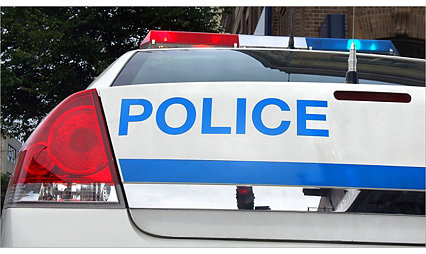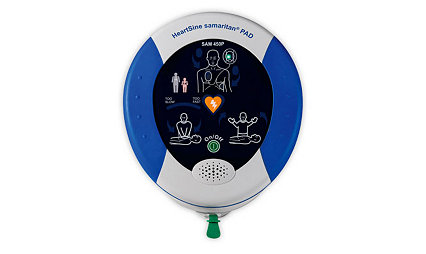Search Results
Showing results for: cr2
Showing 50 Of 62 records
-
LIFEPAK CR2 AED
The LIFEPAK CR2 AED response system empowers bystanders to help save lives. Innovative, easy-to-operate technology helps minimize interruptions in chest compressions and helps streamline communication across the system of care.
-
Product resources
Find a variety of documents including best practices, datasheets and clinical information for easy download.
-
Emergency response and resuscitation AEDs
In the right hands, AEDs help save lives — in the community, in the field, or at the hospital.
-
Public Access AEDs
In the right hands, AEDs help save lives —in the community, in the field, or at the hospital.
-
LIFELINKcentral AED program manager
With LIFELINKcentral AED program manager, managing your AEDs is easier and more accurate.
-
FDIC Tradeshow 2025
Experience Stryker at FDIC 2025. FDIC provides a unique and unparalleled experience for Fire & Rescue professionals worldwide, featuring top-notch instructors, workshops, innovative products and a platform for formal and informal peer learning, fostering friendships and reigniting passion for the industry.
-
Emergency Care
Our comprehensive emergency care solutions are designed to help you save lives. From EMS devices and equipment to data solutions, we share your passion for helping patients and improving team performance.
-
Power-PRO XT
Powered Ambulance Cot
Industry-leading powered ambulance cot features a battery-powered hydraulic system that raises and lowers the cot at the touch of a button.
-
Public Access
Who will be saved next?
If a cardiac emergency strikes one of your employees, customers or visitors, are you prepared to help save a life? An AED program is a critical link in the chain of survival, empowering you to deliver lifesaving intervention before an EMS team arrives. Stryker offers diverse options and deep expertise to help you choose the right device and cost-effectively manage your AED program.
-
Emergency Care training and education
Discover on-demand webinars, online and in-person training and additional resources created specifically for EMS, first responders, hospital clinicians, the community and more.
-
Knowing when to use an AED: CPR and AED guidelines for sudden cardiac arrest
When to use an AED is crucial in sudden cardiac arrest situations. Learn how to recognize sudden cardiac arrest symptoms and act promptly to help increase the chance of survival.
-
Why all police cars need AEDs
Law enforcements' role in providing early defibrillation
-
Sudden cardiac arrest vs heart attack: what you need to know
Heart attacks and sudden cardiac arrest (SCA) are two very different events, but people often confuse the two. Understanding the difference could help save a life.
-
Emergency response and resuscitation
Harness the power of a systems-based approach
Our products are designed to work together to give emergency caregivers more control of a critical event, wherever they may be. Whether in the field or in the hospital, Stryker empowers you to deliver better care with coordinated systems especially for resuscitation, STEMI, sepsis, or stroke.
-
Law enforcement
In law enforcement, you know you can’t predict when an emergency strikes, but you can be prepared. Sudden cardiac arrest can happen to anyone, anywhere. Stay ready with AEDs in police vehicles. Be prepared for sudden cardiac events, anywhere, anytime.
-
Education
Whether a student, teacher, parent or staff member—be prepared to help save a life when sudden cardiac arrest strikes. Help your team feel confident using an AED, and equip your schools with the knowledge and tools they need to help save lives today.
-
AED pad placement guide
Where to place AED pads on adults and children
In the critical moments of a sudden cardiac arrest, the proper use of an automated external defibrillator (AED) can help determine the outcome of the event.
-
Athletics
Sudden cardiac arrest can strike even the healthiest athletes without warning. Learning how to use an AED properly can help save a life.
-
Workplace and public safety
AEDs for the community
An AED program is a critical link in the chain of survival of a sudden cardiac arrest, empowering you to deliver lifesaving intervention before first responders arrive. With more than a million AEDs deployed globally, Stryker offers diverse options and deep expertise to help you choose the right device and cost-effectively manage your community AED program.
-
Hospitals and clinics
Emergency solutions for hospitals and clinics
Our innovative, connected solutions are designed to help enhance patient care and operational efficiency. Choose the solution that meets your clinical and operational needs, then deploy quickly with support from a true partner — and a leader in emergency medicine and resuscitation.
-
Defibrillator 101
Defibrillators detect the heart’s rhythm and send potentially lifesaving shocks to the heart if needed. They can help correct an arrhythmia and restore a normal heartbeat if the heart suddenly stops beating.
Last Updated September/2017


?$preset_426_254$)

